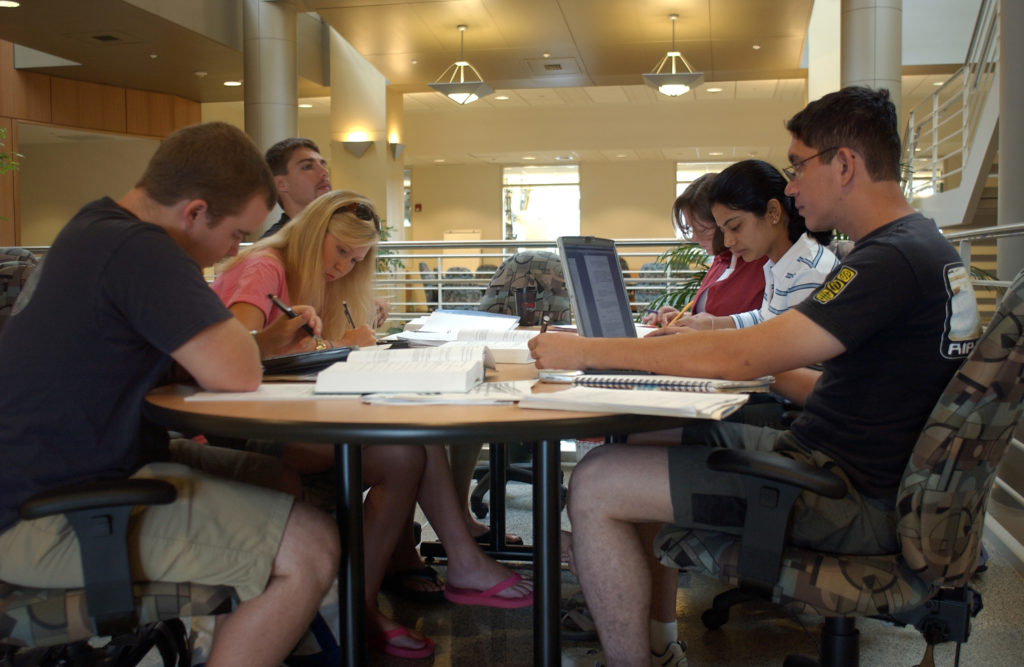 Every semester after teachers have given their first test, a wave of dismay comes over them. They lament to each other about how poorly many of their students did on material they covered explicitly in class sessions and assignments. Their pain can be particularly acute in first-year and departmental gateway courses, and they wonder if their students have a clue about how to study.
Every semester after teachers have given their first test, a wave of dismay comes over them. They lament to each other about how poorly many of their students did on material they covered explicitly in class sessions and assignments. Their pain can be particularly acute in first-year and departmental gateway courses, and they wonder if their students have a clue about how to study.
The sad fact is many of the students don’t! They got A’s in high school just by looking over their class notes and graded homework before the test and repeating it all on the test. As we know and they learn the hard way, rote memorization falls woefully short in college courses—at least in the good ones, which hopefully include yours.
So if students don’t know how to study, how can you help them without regressing to pure memorization tests? Here are a few strategies you might consider.
-
- Use study guides to make your expectations clear. It’s hard for students to prepare effectively for tests when they aren’t sure what kinds of thinking they’ll be expected to do. Clear learning objectives can help a lot. If you give objectives to students in the form of a study guide a week or so before an exam (To do well on this test, you should be able to define…, explain…, calculate…, derive…, critique…, formulate…, design…), students can make sure they’re studying the right things.
You may worry that giving students study guides is spoon-feeding them. It isn’t—not if it’s done right. Study guides just clarify instructors’ expectations, including expectations of high-level thinking and problem-solving, and make it clear that rote memorization won’t be enough. You can make your expectations as high as you want (within reason); when you make them clear to the students, you’ll maximize the chances that the students capable of meeting them will do it. For ideas about to write learning objectives and use them as study guides, click here. - Tell students explicitly about study strategies supported by cognitive science. Tell them about retrieval practice (self-tests) for material they may need to recall, spacing out their study sessions instead of cramming at the last minute, and setting up problem solutions from memory to be sure they really understand how to solve the kinds of problems you may ask on the test. Warn them against just re-reading lecture notes and old problem solutions, which can lead to “illusions of competence” and disappointing exam grades. For more details, click here.
- Give spaced retrieval practice in class. All of the strategies listed in the previous suggestion can and should be modeled in class. Give students periodic short quizzes so they can test their understanding of the material before a higher-stakes mid-term exam. Use individual and small-group active learning exercises in class so they can practice the skills you’re teaching and get immediate feedback on their attempts. A step-by-step process for using partially worked-out problem solutions effectively to promote learning can be found here. For a brief tutorial on active learning exercises, click here, and to see narrated videos that illustrate active learning in STEM classes, click here (12 minutes) and here (35 minutes).
- Help students think about their study practices (metacognition) by using exam wrappers after each test. When you hand back the tests, have students reflect on the results and ask themselves: (1) How did I prepare for this test? (2) Am I happy with my performance? (3) What might I do to prepare more effectively for the next test? For more details on exam wrappers, click here.
- Promote a growth mindset. When students have a growth mindset, they believe that they can improve their performance with hard work. This attitude contrasts with a fixed mindset, a belief that performance is based on a talent you either have or you don’t, as in “I’m just bad at math.” Research has shown that compared to a fixed mindset, a growth mindset generally leads to a better academic performance. You can have a profound influence on your students by regularly suggesting that even if the material you’re teaching seems difficult, they can master it by working hard and using the strategies you’ve taught them. You might also note that some of the same material was also hard for you when you first encountered it. For more information on helping students develop a growth mindset and on the supporting research, take a look here.
To find out more about these strategies and many more you can use to help your students’ performance, check out Teaching and Learning STEM: A Practical Guide (Ch. 2 on objectives, Ch. 6 on active learning, and Chapters 9 and 10 on helping students develop high-level thinking and problem-solving skills). Another good resource is Teach Students How to Learn (McGuire, S.A., 2015).
- Use study guides to make your expectations clear. It’s hard for students to prepare effectively for tests when they aren’t sure what kinds of thinking they’ll be expected to do. Clear learning objectives can help a lot. If you give objectives to students in the form of a study guide a week or so before an exam (To do well on this test, you should be able to define…, explain…, calculate…, derive…, critique…, formulate…, design…), students can make sure they’re studying the right things.
I like your post.
Great article, it is really worth reading and helpful for me. please keep it up, please!